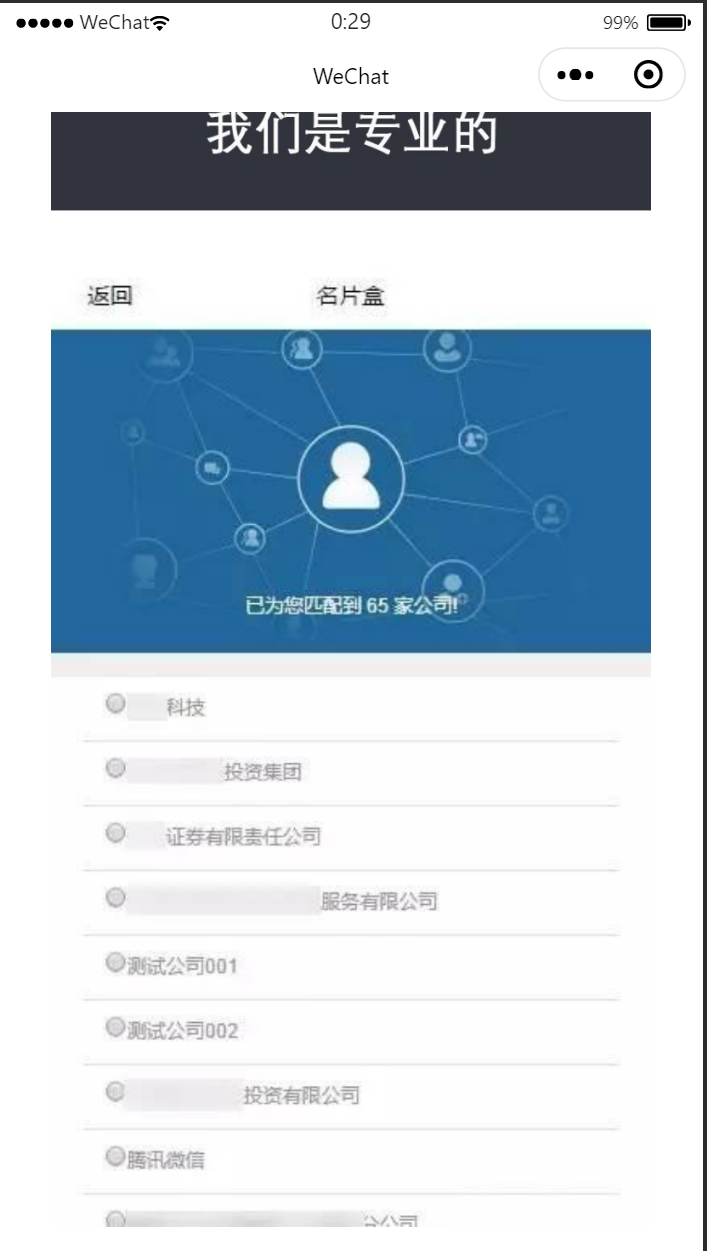Practices on small micro-channel picture-adaptive program
In the ordinary course of business scenario, many places are required to display a list of the picture, but there is such a problem, due to the size of each uploaded picture is not the same, the picture will happen either too large or too small, or pulled extending the case, as FIG.

For this situation, my idea is to use bindload property within the image to calculate label, introduced bindload attribute is as follows

The following is a specific process flow
1, first of all we were on the page layout, just give view of the container label image width and height to add and use wx: for traversing rendering Custom attributes data-i passed index value, I also joined container the dynamic properties, is to calculate the picture does not exceed the size of the entire layout of the vessel leads to confusion
<block wx:for="{{list_1}}" wx:key="{{index}}"> <view class="top_img" style="width:{{imgmsg?imgmsg[index].width:''}}px;height:{{imgmsg?imgmsg[index].height:''}}px"> <image style="width:{{imgmsg[index].width}}px !important;height:{{imgmsg[index].height}}px !important;" src="{{item.url}}" bindload="imageLoad" data-i="{{index}}" /> </view> </block>
2, is defined in the js analog data, and image property space defined object into the object by key value corresponding to the target image width and height properties
page({ data:{ list_1: [{ url: '../../img/1.jpg' }, { url: '../../img/2.jpg' }, { url: '../../img/3.jpg' }, { url: '../../img/4.jpg' }], imgmsg:{} } })
3, a method to add imageLoad calculated image size, we can here to acquire image width and height of the container by wx.createSelectorQuery () method to obtain an image of the original width and height of the object by the event, as follows
// display image adaptive ImageLoad (E) { // Get the node attributes applet API const Query = wx.createSelectorQuery () var imgw = e.detail.width, // image original width imgh = e.detail.height, // image original height index = e.currentTarget.dataset.i, // picture index ratio = imgw / ImgH, // picture aspect ratio image = the this .data.imgmsg, // image width and height of the object index that = the this , viewW = null , // container width viewH = null ; // height of the container . query.select ( '. top_img') boundingClientRect ( function (RES) { viewW = res.width; viewH = res.height; // Since the size of the picture is not necessarily possible over the whole picture width and height of the container would, therefore there is determined the multi-wide high picture itself carried IF (imgw> ImgH || imgw> viewW) { // when the image width wider than its own high picture, the picture is equal to the width of the container, to calculate a picture of high imgw = viewW; imgh = imgw / ratio; } The else IF (imgw <ImgH || ImgH> viewH) { // when the image is smaller than the width of its own high picture, the higher the high width of the container, to calculate a picture of the container imgw * = viewH ratio; imgh = viewH; } // the width and height attributes stored in the image is calculated according to the index object, and uses the math floor rounding method Image [index] = { width: Math.floor(imgw), height: Math.floor(imgh) } // Update the view that.setData ({ imgmsg: image }) }) query.exec() },
Well, here, we can look up specific results



Simple list of images to achieve the adaptive function, but this method can be extended and optimized, if there is a good exchange of ideas can learn together and improve together